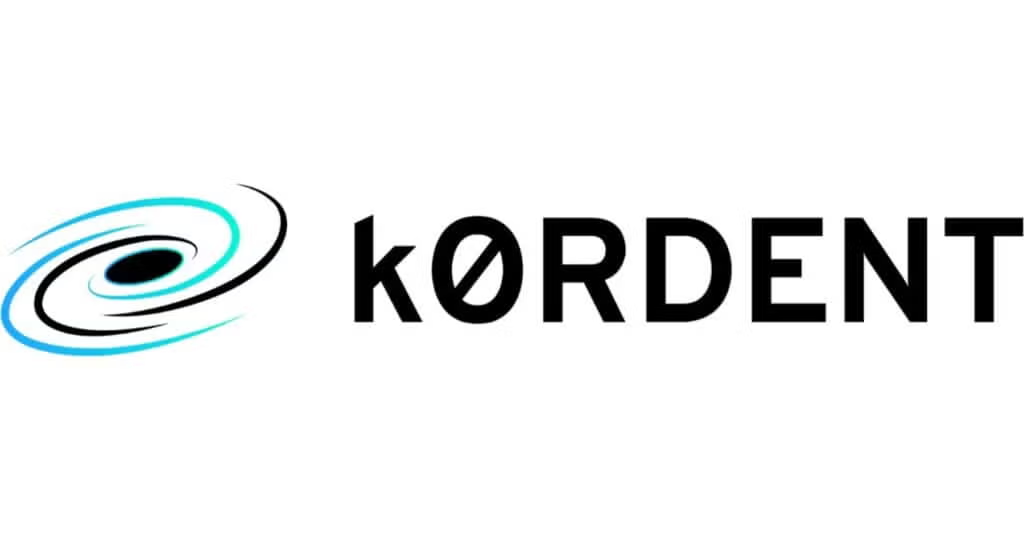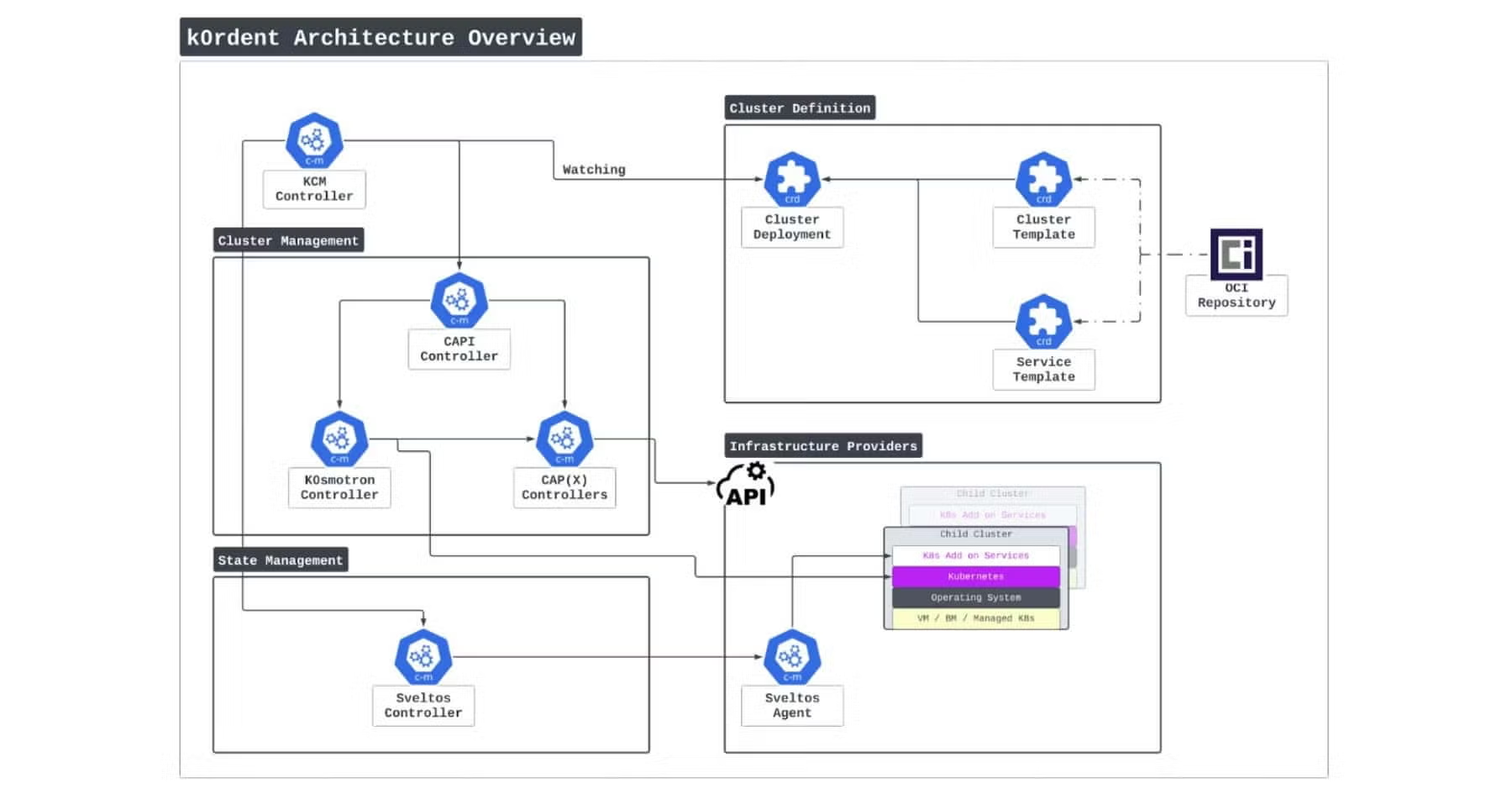The Challenge Today
Kubernetes is the de facto standard for container orchestration, but managing a complete infrastructure efficiently remains a significant challenge. Without a standardized approach, most organizations building an Internal Developer Portal (IDP) face inconsistent configurations and policies, high operational overhead, and complex upgrades, leading to inefficiencies, high cost, and security and compliance risks in multi-cloud and hybrid environments.
One of the biggest hurdles is inconsistent cluster provisioning across cloud providers and on-premises setups. Each cloud platform (AWS, Azure, GCP) has its own proprietary APIs and tools, leading to fragmented workflows, and oftentimes the need to hire multiple specialists. This lack of standardization increases configuration drift and operational complexity.
Teams rely on Terraform, cloud CLIs, or custom scripts to provision and maintain clusters, making automation difficult and increasing the risk of human error. Upgrades and scaling become cumbersome, requiring careful coordination to avoid downtime. Another key challenge is the lack of GitOps-friendly workflows. Without a declarative approach, infrastructure drift becomes an issue, and maintaining cluster configurations across multiple environments is difficult. Teams also struggle with high operational costs, as they must maintain cloud-specific infrastructure-as-code (IaC) modules while manually troubleshooting cluster failures.
Moreover, Kubernetes lacks a built-in API for managing clusters, forcing teams to rely on external tools rather than using native Kubernetes commands. The need of the hour is to solve these issues by introducing a Kubernetes-native, declarative approach that integrates seamlessly with GitOps workflows, enables self-service provisioning, and automates upgrades and scaling.
Enter k0rdent!

k0rdent is a Kubernetes-native distributed container management environment (DCME) designed to help platform engineers manage infrastructure at massive scale. Built on Kubernetes’ maturity, stability, and wide adoption, k0rdent leverages community-driven standards to minimize adoption risks. Acting as a “super control plane,” it enables centralized, template-driven lifecycle management of Kubernetes clusters and services across on-prem, cloud, and hybrid environments. By providing a repeatable, secure, and standardized approach, k0rdent empowers teams to compose Internal Developer Platforms (IDPs) that support complex modern workloads, while ensuring consistency and reliability.
At its core, k0rdent is Kubernetes-native, leveraging components like the Cluster API to orchestrate infrastructure across any provider, while maintaining the openness, flexibility, and control that Platform Engineers need.
k0rdent has been tested with AWS EC2, AWS EKS, Azure Compute, Azure AKS, vSphere, and OpenStack (so far!), and can be easily extended to support other publicly-available and custom providers. It provides a modular, Helm-based templating system that makes it easy to standardize and automate infrastructure and services provisioning—whether for traditional cloud applications or the next wave of AI-driven workloads.
k0rdent consists of:
Handles the deployment, configuration, updates, and lifecycle management of Kubernetes clusters. KCM streamlines CRUD (Create, Read, Update, Delete) operations, ensuring clusters remain consistent and up to date across multi-cloud and hybrid environments.
k0rdent State Manager (KSM)
Manages the installation and lifecycle of beach-head services, policies, and Kubernetes API configurations. Currently integrated within KCM, KSM is expected to evolve into a standalone component. It leverages Project Sveltos to enhance functionality, enabling policy-driven cluster configuration and compliance management.
k0rdent Observability & FinOps (KOF)
Provides real-time monitoring, log management, and event tracking for both Kubernetes clusters and beach-head services. KOF ensures operational visibility, helping teams optimize resource usage and control cloud costs in alignment with FinOps best practices.

The k0rdent architecture follows a declarative approach to cluster management using Kubernetes principles. The modular extensible architecture provides a repeatable template-driven solution to interact with subcomponents such as the Cluster API (CAPI) and other Kubernetes components.
The key principles of the architecture include:
- Leveraging Kubernetes core principles
- Highly aligned but loosely coupled architecture
- Pluggable and extensible architecture
- Template-driven approach for repeatability
- Standards-driven API
- Leveraging unmodified upstream components (e.g., CAPI)
- Supporting integration with custom components downstream
k0rdent enables organizations to:
- Deploy Kubernetes anywhere—on-prem, public clouds, managed services, or the edge—with consistent automation and policy enforcement.
- Provision and manage the core services needed to run applications consistently, repeatably and automatically, while ensuring the necessary controls and compliance are taken into account.
- Provide self-service, composable infrastructure—allowing platform teams to create flexible, workload-specific IDPs without repeatedly reinventing the wheel.
- Scale modern workloads seamlessly, for example AI & ML workloads —with a templated approach covering the needs of MLOps and other workloads, across distributed infrastructure.
- Enforce security and compliance at scale—with centralized governance, declarative automation, and open-source transparency.
With k0rdent, organizations benefit from infrastructure agnosticism, automated cluster management, and reduced operational complexity. It enables declarative provisioning, scaling, and upgrades while ensuring consistency across multiple environments. Ultimately, k0rdent simplifies Kubernetes management, enhances automation, and eliminates manual provisioning headaches. If you’re running Kubernetes at scale, k0rdent is an essential tool for efficiency and consistency.
Get Started with k0rdent today
Kickstart your journey with k0rdent using our step-by-step QuickStart guides and the Administration & Operations Guide. These resources will help you get up and running quickly. Prefer to dive straight into the code? Visit the k0rdent project on GitHub to explore and contribute.
k0rdent in comparison to ClusterAPI
Overcoming ClusterAPI’s Complexity
Creating a Kubernetes cluster using ClusterAPI (CAPI) often requires 200-400 lines of YAML, posing a steep learning curve, especially for newcomers. While experienced users may find it easier over time, getting started with CAPI is challenging.
How k0rdent Helps: Instead of writing extensive YAML configurations, k0rdent provides ready-made templates that require only 5-10 lines of YAML for customization. This makes it significantly easier to deploy clusters while still allowing users to inspect and learn from the underlying templates and generated CAPI objects.
Managing CAPI’s Multi-Component Complexity
CAPI is not a standalone system—it requires integrating CAPI itself, infrastructure providers (CAPX), and additional tools like k0smotron. Managing these components manually is complicated, as different versions may or may not work together, and testing compatibility across all components is minimal.
How k0rdent Helps: k0rdent pins tested versions of all necessary components, ensuring seamless compatibility and stability. Users can confidently deploy Kubernetes clusters without worrying about version mismatches or troubleshooting integrations—everything has been vetted and tested by Mirantis.
Beyond CAPI: Enhanced Add-On Management with Sveltos
While CAPI’s CAAPH enables Helm chart installations on clusters, it’s rudimentary and not production-ready—serving only as a reference implementation of ClusterAPI’s Add-on Orchestration Proposal.
How k0rdent Helps: k0rdent leverages Sveltos, which is already integrated with CAPI and battle-tested in thousands of production clusters. It simplifies policy-based add-on orchestration while extending CAPI’s capabilities.
Built-in Distributed Observability
k0rdent includes a native observability stack that monitors both the management cluster (mothership) and workload clusters (child clusters), ensuring visibility across the entire infrastructure.
In short, k0rdent eliminates CAPI’s complexity, ensures component compatibility, enhances add-on management with Sveltos, and provides built-in observability—all in a production-ready, streamlined platform.
Another question that arises in the community is, why use Templates and not ClusterClass, and here is a comparison chart defining this:
| k0rdent Templates | ClusterClass | |
| Centralized Templates of Clusters with Templating Engine | ✅ Helm | ✅ JSON Patches |
| Variable System & Customized Variables | ✅ | ✅ |
| Update Clusters individually | ✅ | ✅ |
| Update multiple clusters in groups | ✅ | ❌ |
| Prevention of in-place upgrades (single change in ClusterClass could have devastating effect to many clusters) | ✅ | ❌ |
| Templates can create any k8s object in mgmt Cluster namespace (Useful for other tools like VPN, Observability, GitOps, etc) | ✅ | ❌ |
| Choice of which helmcharts/services deployed inside Cluster (on creation of a cluster I would like to choose which helmcharts should exist in the cluster) | ✅ | 🟧 (only through cluster labels) |
| Approval Process of Templates before usage in specific clusters | ✅ | ❌ |
| Template Upgrade Chains (enforcement of upgrade from Template-v1.1 to Template-v1.2 before Template-v2.0) | ✅ | ❌ |
| Upgrade/Change Dry-Run | 🕐 (future capability) | 🟧 (‘topology plan’ will be removed) |
k0rdent navigating through the CNCF Landscape
The Cloud Native Computing Foundation (CNCF) has long been at the forefront of fostering open-source innovations in the cloud-native ecosystem. In alignment with this mission, the introduction of k0rdent marks a significant advancement in Kubernetes-native distributed container management.
A notable aspect of k0rdent is its commitment to open-source principles. By being 100% open-source, it ensures that platform engineers have the flexibility to customize and extend the platform to meet specific organizational needs without the constraints of vendor lock-in. This openness fosters a collaborative community where best practices and innovations are shared, accelerating the evolution of cloud-native technologies.
Join the k0rdent Community
Platform engineers today face increasing demands—but they don’t have to tackle them alone. k0rdent is 100% open-source and community-driven, offering the flexibility, tools, and ecosystem needed to manage distributed infrastructure efficiently.
Built by an international team of passionate developers, k0rdent thrives on collaboration. We welcome contributions and ideas to expand and improve the project.
Get Involved:
⭐️Drop a star to support the k0rdent project
✅ Explore the k0rdent Community repo on GitHub
✅ Join the #k0rdent channel on CNCF Community Slack (Sign up for CNCF Slack, then join #k0rdent)
✅ Sign up via our Community Invitation Form to attend Team k0rdent’s regular Office Hours
Be part of the movement—let’s build the future of Kubernetes-native infrastructure together!